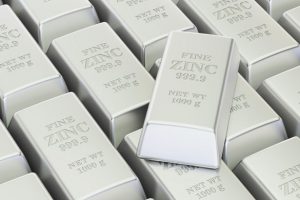Zinc treatment charges tell us a similar story to copper

We wrote about the copper market and what smelter treatment charges are telling us about mine supply — and, hence, refined metal supply this year.
Treatment and refining charges have collapsed. That is a sure sign that refiners are struggling to secure concentrate supply as mines’ recovery, largely due to COVID-19 effects, lags global industrial recovery.
The MetalMiner Best Practice Library offers a wealth of knowledge and tips to help buyers stay on top of metals markets and buying strategies.
Zinc treatment charges
The story is somewhat similar for zinc treatment charges.
Reuters reports last year’s 10-year high smelter treatment charge of $299.75 per metric ton based on the expected surge in mine production failed to materialize. COVID-19 lockdowns rocked large supplier countries such as Peru and Mexico.
As a result, this year’s benchmark smelter terms have almost halved to $159 per ton, Reuters reported. That marks its the second-lowest level in a decade.
The last time treatment charges were this low, zinc rose to $3,596 per ton in 2018.
Zinc treatment charges for spot
Spot treatment charges are even lower than contract terms.
Reuters reports figures of $60-$74 per ton in China. However, unlike for copper, zinc smelters have not resorted to plant closures yet. They are hoping concentrate supply will improve as vaccination rates increase.
Strangely, though, there does not appear to be a shortage of refined metal.
The post reports LME warehouses registered inflows of 31,700 tons in the space of just two days on April 9 and 12. Furthermore, headline inventory of 296,525 tons is now up by 47% on the start of January.
According to the International Lead and Zinc Study Group (ILZSG), global refined production rose by 1.2% over last year. It estimated a supply surplus of 533,000 tons in 2020.
What isn’t on the exchange is nearby. At the end of February, there were also 87,400 tons of zinc in LME “shadow storage.” That is metal that is stored off-warrant but under warehouse agreements, explicitly referencing the option of full exchange delivery, in addition to almost certainly more zinc sitting in the deeper stock and finance storage. Like aluminum, this has been a feature of the zinc market for the last decade or more.
Supply situation
More mine supply will almost certainly come as vaccines are rolled out.
However, top producer Peru (outside of China, that is) has been devastated by one of the worst infection rates per head of population in the world. Furthermore, to date it has only managed to vaccinate 2.2% of the population, with a first vaccine dose leaving it still severely exposed to the virus and needing to maintain social distancing protocols that limit output.
Last week saw Peru’s highest infection rates since the pandemic started. Yet, the country has failed to secure sufficient vaccine supplies to slow the spread. According to Reuters last week, Peru has received only 1.5 million doses for a population of 33 million.
Improved mine supply will arrive this year. With it, treatment charges will rise as concentrate availability improves.
But, in the meantime, probably for much of this year, limited mine supply will continue to support zinc prices.
We’re offering timely emails with exclusive analyst commentary and some best practice advice. Sign up here.



Leave a Reply